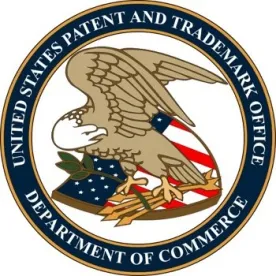The America Invents Act’s creation of patent challenge proceedings to be conducted by the USPTO’s Patent Trial and Appeals Board (PTAB) provided a powerful tool for challenging patent validity outside of costly litigation proceedings. But recent events are changing the strategic advantage that such proceedings may hold for patent challengers.
Almost one year ago, the Supreme Court issued its decision in SAS Institute Inc. v. Iancu, holding that the PTAB must – if it decides to institute an inter partes review (IPR) proceeding – decide the patentability of all of the claims the petitioner has challenged. As implemented by the USPTO, “if the PTAB institutes a trial, the PTAB will institute on all challenges raised in the petition.” See Guidance. This all-or-nothing approach has resulted in denial of petitions for which only a few of the challenged claims are likely to be found invalid. See, e.g., Biofrontera Inc. v. DUSA Pharms., Inc., IPR2018-01585, Paper 10 (P.T.A.B. Feb. 26, 2019).
Just five months ago, the USPTO abandoned its use of the “broadest reasonable interpretation” (BRI) in IPR, Post-Grant Review, and Covered Business Method proceedings, and began using the Phillips standard applied by federal courts. See Changes to the Claim Construction Standard for Interpreting Claims in Trial Proceedings Before the Patent Trial and Appeals Board, 83 Fed. Reg. 51340 (Nov. 11, 2018) (codified at 37 C.F.R. Pt. 42); Phillips v. AWH Corp., 415 F.3d 1303 (Fed. Cir. 2005). The BRI of a claim could be broader than its construction under the Philips standard, making its invalidation over the prior art potentially more likely at the PTAB than in Court. This difference in standard provided a strategic advantage for challengers named as defendants in litigation, who would otherwise have to challenge validity under the Court’s potentially narrower claim interpretation. The PTAB’s adoption of the Philip’s standards thus eliminated a potential advantage for challengers.
Most recently, the USPTO has acted to facilitate the amendment of claims during such proceedings. Historically, such amendments were exceedingly rare. According to the PTAB’s Motion to Amend Study Installment 5 (updated through September 30, 2018) for almost 3,600 completed cases, patent owners filed motions to amend only 326 times and those motions were granted in only 21 cases – a filing rate of 9% and a grant rate of less than 1% for completed cases.
On March 15, 2019, the USPTO issued a Notice which launched a Pilot Program for Motion to Amend Practice and Procedures in Trial Proceedings under the America Invents Act on March 15, 2019. Under this Pilot Program, a patent owner who files a motion to amend will have three options: (1) a patent owner may receive preliminary guidance from the PTAB regarding the motion to amend; (2) a patent owner may file a revised motion to amend after receiving petitioner’s opposition to the original motion to amend and/or after receiving the Board’s preliminary guidance; and (3) a patent owner may choose to pursue a motion to amend under 35 U.S.C. § 316 (d) and 37 C.F.R. § 42.121 (IPR) or 42.221 (PGR), as currently practiced.
The Pilot Program provides an adjusted timeline for motions to amend, so that parties can prepare their filings within the 12-month statutory deadline for the PTAB to decide an inter partes review once instituted. As a result, the USPTO does not anticipate that the Pilot Program will require extending the 12-month statutory deadline.
The implementation of the new Pilot Program, as well as its recent designation as precedential of the PTAB’s Order in Lectrosonics, Inc. v. Zaxcom, IPR Nos. 2018-01129, 2018-01130 (Feb. 25, 2019), may increase the frequency of motions to amend. This may, in turn, increase the chances that patents will survive IPR.
Lectrosonics, Inc. v. Zaxcom provides important guidance on motions to amend – including eight specific points. First, a request to substitute one or more claims as part of a motion to amend ordinarily will be contingent. Accordingly, the Board will consider a proposed substitute claim if a preponderance of the evidence establishes that the original patent claim it replaces will be unpatentable. Second, it is ultimately up to the petitioner to show any proposed substitute claim is unpatentable by a preponderance of the evidence. Third, the court will allow a reasonable number of substitute claims for each challenged claim; if a patent owner proposes more than one substitute claim for a cancelled claim, the patent owner should explain the need for the additional claim(s) and why the number of proposed substitute claims is reasonable. Fourth, in considering a motion to amend, the Court will examine the entirety of the record to determine whether a patent owner’s amendments respond to a ground of unpatentability involved in the trial. However, not every word changed in a claim need be solely for the purpose of overcoming an instituted ground. Fifth, the amended claims may not enlarge the scope of the claims of the challenged patent, and may not include new matter. Sixth, a motion to amend must include a claim listing reproducing each proposed substitute claim, clearly showing the changes in the proposed substitute claim with respect to the original patent claim to be replaced. Seventh, consistent with the rules (37 C.F.R. § 42.24), a motion to amend is limited to 25 pages, an opposition is limited to 15 pages, and a reply is limited to 12 pages. Eighth, a patent owner must disclose to the Board any information that is material to the patentability of substitute claims.
The ultimate effect that these recent changes will have on the outcome of PTAB patent challenge proceedings remains to be seen. However, it appears there is already an increase in the number of motions to amend, with 90 such motions having been filed in the 670 currently pending proceedings – a filing rate of 13%, up from 9%. Patent challengers and patentees should take care to consider the potential effect of these changes when considering strategies involving patent validity challenges at the PTAB.





 />i
/>i

